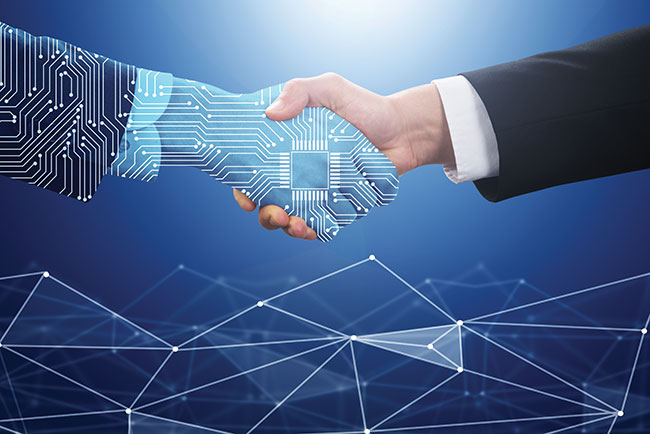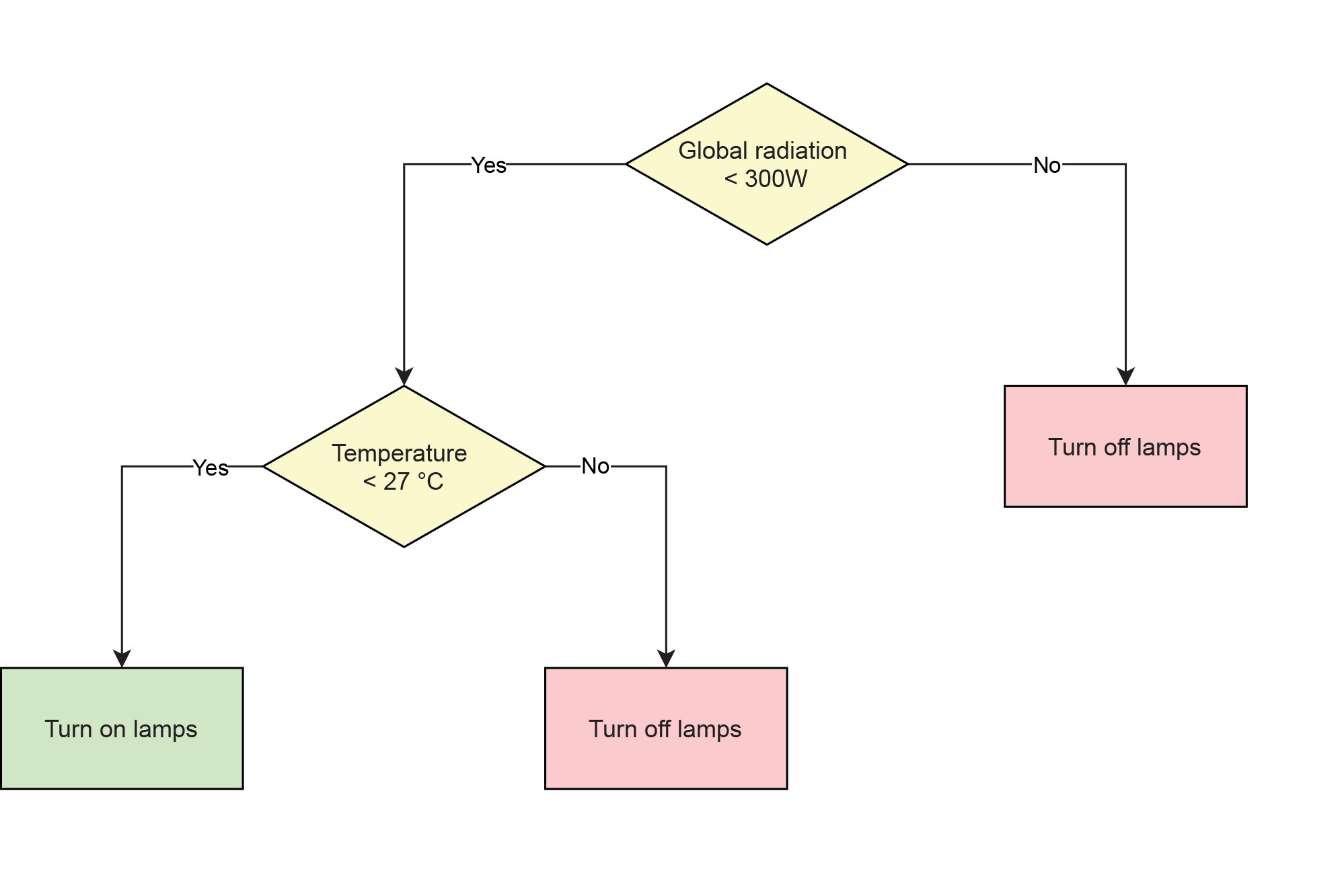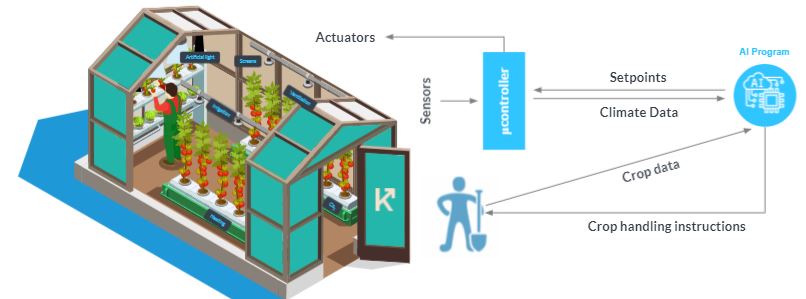
Features
Structures & Equipment
Trends
A primer on AI and its rise in the greenhouse
For horticulture, artificial intelligence is no longer a work of science fiction. Here's how it could improve operations in the greenhouse.
September 14, 2021 By Kenneth Tran
 Photo: © AndreyPopov / iStock / Getty Images Plus
Photo: © AndreyPopov / iStock / Getty Images Plus Results from the first international Autonomous Greenhouse Challenge in 2018 marked the first time artificial intelligence (AI) publicly outperformed humans in greenhouse growing – both in yield and resource-use efficiency. That year, I led the Microsoft Sonoma team, and not only did we win the challenge hosted by Wageningen University & Research, we also demonstrated that an AI algorithm can grow crops better than grower expertise alone, improving yield by six per cent and profit by 17 per cent.
This year, we teamed up with Cornell University researchers to win the first phase of the third international Autonomous Greenhouse Challenge. Combined, our experiences have only further cemented my scientific belief in the potential of AI and IoT technology (or “AIoT” as we call it) in improving greenhouse sustainability, viability, and profitability. For many businesses, however, it can be challenging to know what to do next.
Having seen the potential of AI, you may ask: What really is AI and how does it work? Will it assist me or replace me?
Why AI is on the rise
AI is not new. The concept has been around since the 1950s and has been through multiple ups and downs. With traditional AI, experts transfer knowledge to engineers who then encode it into a computer program. The job of the computer is straightforward, relying on simple logical rules. If the air temperature is higher than 27 °C, then open the vents, for example. The rule-based AI can be visualized as a decision tree, such as the one pictured here. It’s for a simple automated supplemental lighting strategy, factoring in global radiation and temperature in the greenhouse.

A sample decision tree for a supplemental lighting strategy. (Disclaimer: This is for illustrative purposes only. Not for use in production.)
These rules are manually crafted by in-house programmers and are therefore not easy to maintain, improve, or scale to multiple farms or multiple scenarios. Plus, it is highly dependent on staff who may quit or leave. A robust, maintainable, scalable autonomous grower would be insurance against the operations falling apart.
Modern AI, driven by Machine Learning (ML), fixes most of those setbacks. Unlike traditional AI, the modern AI can learn and figure out its own patterns and rules using data and/or after being shown examples. Let’s recycle the decision tree example. Decision tree modeling exists in both traditional AI and ML. In the former context, the tree is designed by humans. With machine learning, the growth of the decision tree can be automated. Data enables the machine to know which nodes to add to the tree and where to incorporate the splits.
The scalability of machine learning allows us to grow more than just one decision tree easily. This modeling technique is known as Random Forest, which is analogous to a committee of individual decision makers who have experienced different data points. The same idea of moving from manual crafting of models to automated learning of the models also applies to other modeling techniques such as linear regression or neural networks. The scalability of machine learning fueled by the availability of data, and the explosion of computational power, has triggered a new revolution. If we think of machine learning as a combustion engine and data as gasoline, then it wouldn’t be hard to see that this is as cascading a revolution as the automotive industry once was.
Let’s dive into a few concrete examples of where AI fits into greenhouse management.
Anomaly detection: This technique is used to find outlier data points relative to some standard or usual signal. It can send timely alerts to growers when the conditions inside the greenhouse diverge from the expected or when sensors need to be replaced/recalibrated.
Yield forecast: Simple time series forecasting models can help us predict yields for better supply chain management.
Local climate forecast: Public weather forecasts can only provide regional weather patterns that are not very accurate and not specific to a greenhouse site. Local weather stations can measure conditions more accurately at the site, but it’s not capable of making forecasts. A properly designed machine learning model can combine the best of both to make better local weather predictions.
Pest/disease detection: Computer vision technology has advanced rapidly over the past decade. Now, with drones and deep learning, we can easily develop a model to accurately predict pests/diseases without too much effort.
Prediction of plant traits: The same computer vision technology mentioned before can also be used to sense and accurately estimate plant characteristics in real-time. Examples include dry weight, fresh weight, and leaf area of the plants. We demonstrated this ourselves during phase one of this year’s Autonomous Greenhouse Challenge. With a limited amount of human-labeled data, our team was able to develop a model that could estimate the dry weight, fresh weight, and leaf area of the lettuce plants with small error rates.
Autonomous growing: Last but not least, this is Koidra’s passion and ultimate product. In this application, the AI program would receive data from a network of sensors inside/outside of the greenhouses, predict the outcomes of different actions, then find the optimal setpoints and send commands to the process computer for realizing the updated setpoints. The technology also provides occasional recommendations for the growers on how to optimally maintain the crop to be in sync with climate strategies.
Human-Machine Collaboration
If AI is so smart, could it ever replace humans, just like a scenario straight out of a dystopian sci-fi film? The answer is no. Both humans and machines are amazing learners but each have their own strengths and weaknesses when it comes to learning and decision making.
Humans can understand decision logic through insights, or “distilled data,” and quickly adapt to sudden changes. Insights could be mined from anywhere: “mental shortcuts” that are encoded in our evolved brain, oral or written accounts, or simple social codes of a tribe. Insights cut through the jungle of data and are handed down through generations of humans, endowing them with the unsurpassed Homo sapiens ability to form sophisticated future simulations.
Our neurons have been trained by millions of years of data, through both evolution (which is also a technique in ML) and education (so-called “transfer learning” in ML). In many cases, the knowledge distilled by humans is so complex that it’s impossible for a machine to figure it out by itself even with terabytes of data. For example, the theory of energy balance and the theory of thermodynamics, which are key in greenhouse management, have been learned and distilled by humans over thousands of years. In terms of both data and computation, thousands of years of evolution is … enormous.
The winning AI solutions must unify the power of machine learning and human knowledge for the best decision making. AI will never replace humans. It simply assists us in completing repetitive and laborious tasks. Think of AI as automation on steroids.
Roadmap To Autonomous Growing
Real-world AI is no longer a castle in the sky, but a partnership between human intellect and machine power, using the best of both worlds in targeted problem solving. Optimizing the best conditions for plant growth must therefore require a multidisciplinary approach that combines the best of growers’ wisdom, a large body of scientific literature, and state-of-the-art data technologies.
Every thousand-mile journey begins with a single step. Identifying that critical first step would be essential to building the information architecture for your enterprise. Our next article on digital horticulture will help you construct a sensible roadmap for your AI greenhouse, with each step compartmentalized and self-sufficient, executed with the best business and sustainability goals in mind.
Kenneth Tran is CEO of Koidra Inc., an AI solutions supplier active in horticulture. To learn more, email Koidra at hello@koidra.ai and see Ken’s talk at the Canadian Greenhouse Conference on Oct 6.
Print this page
